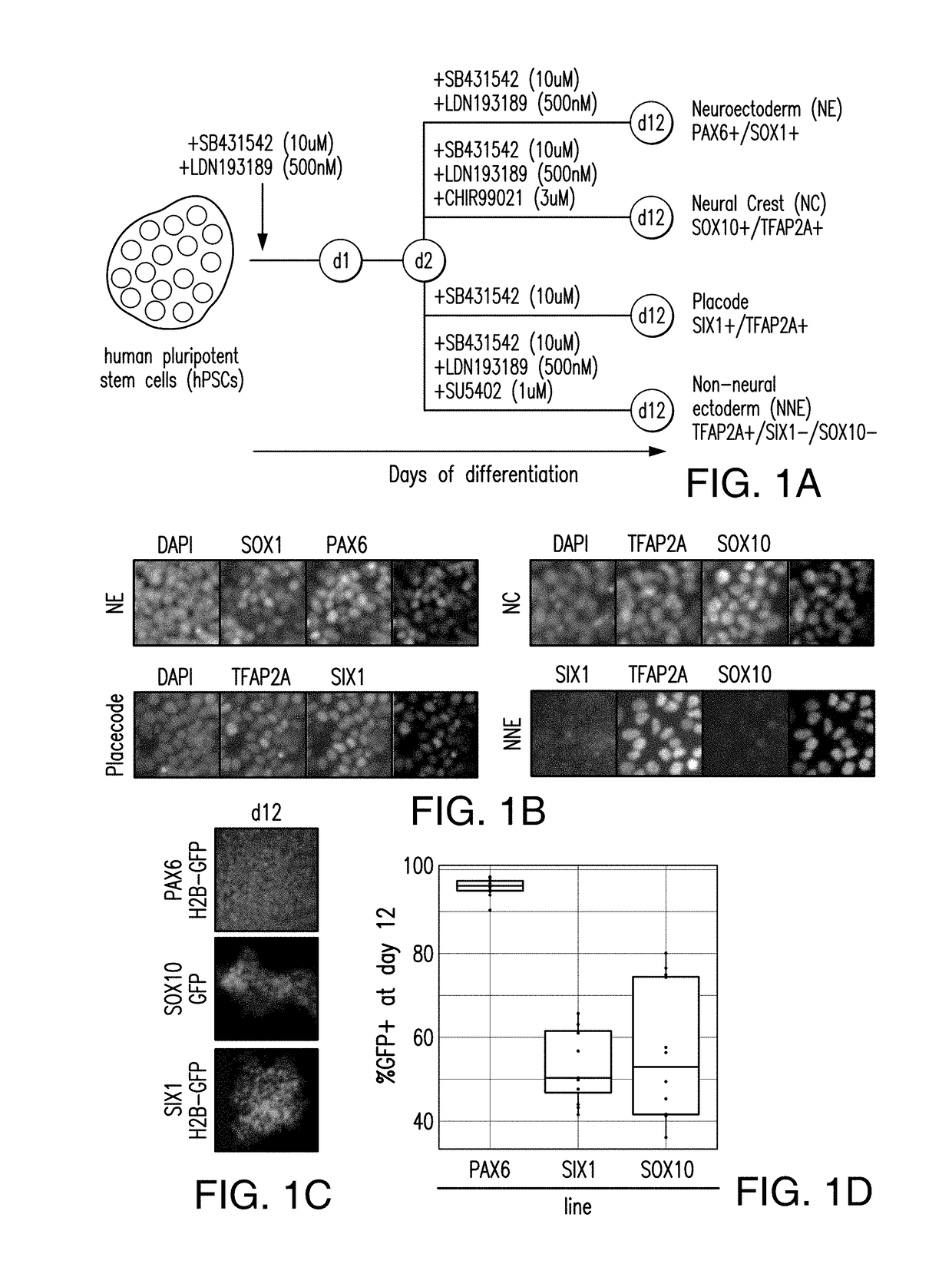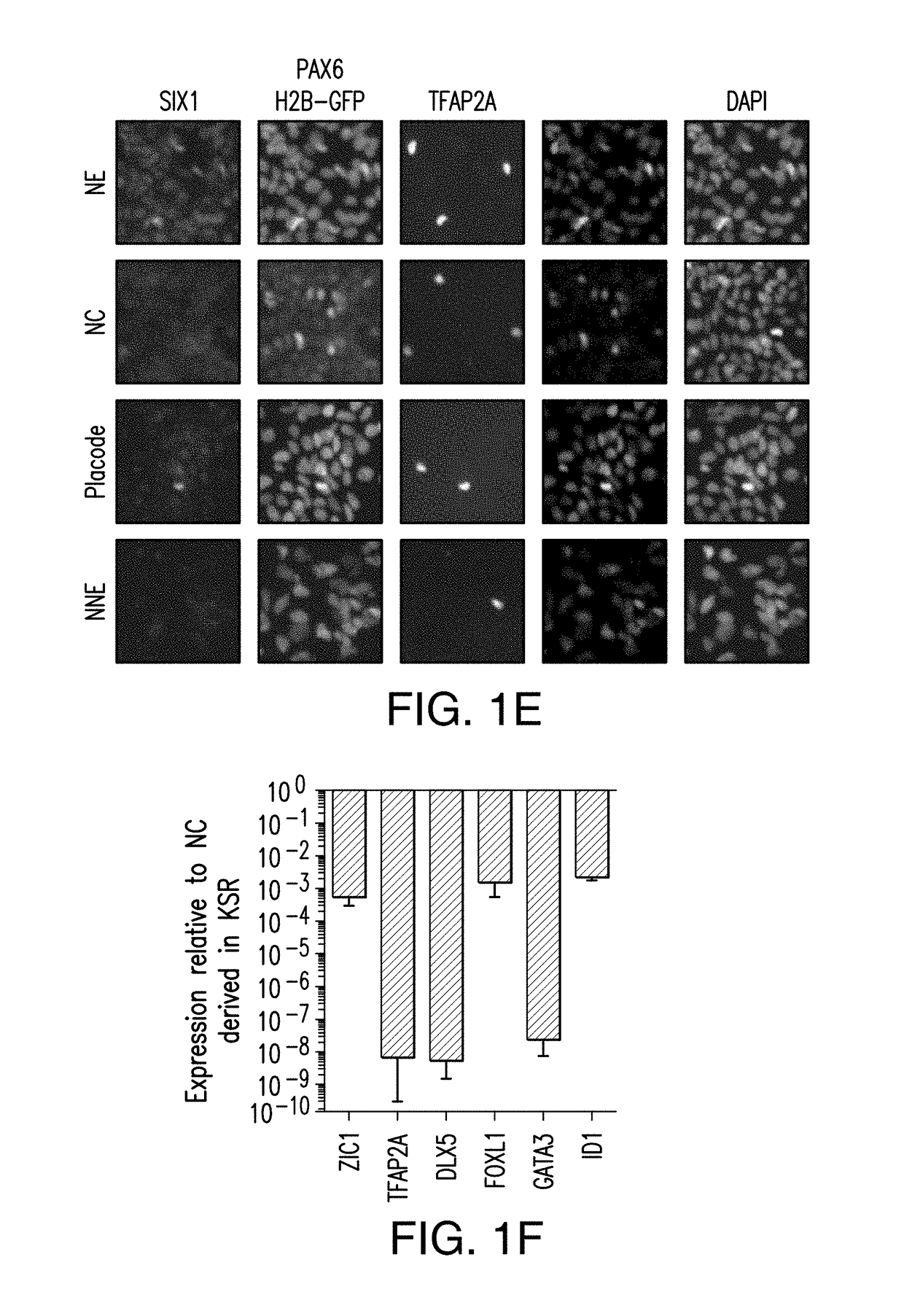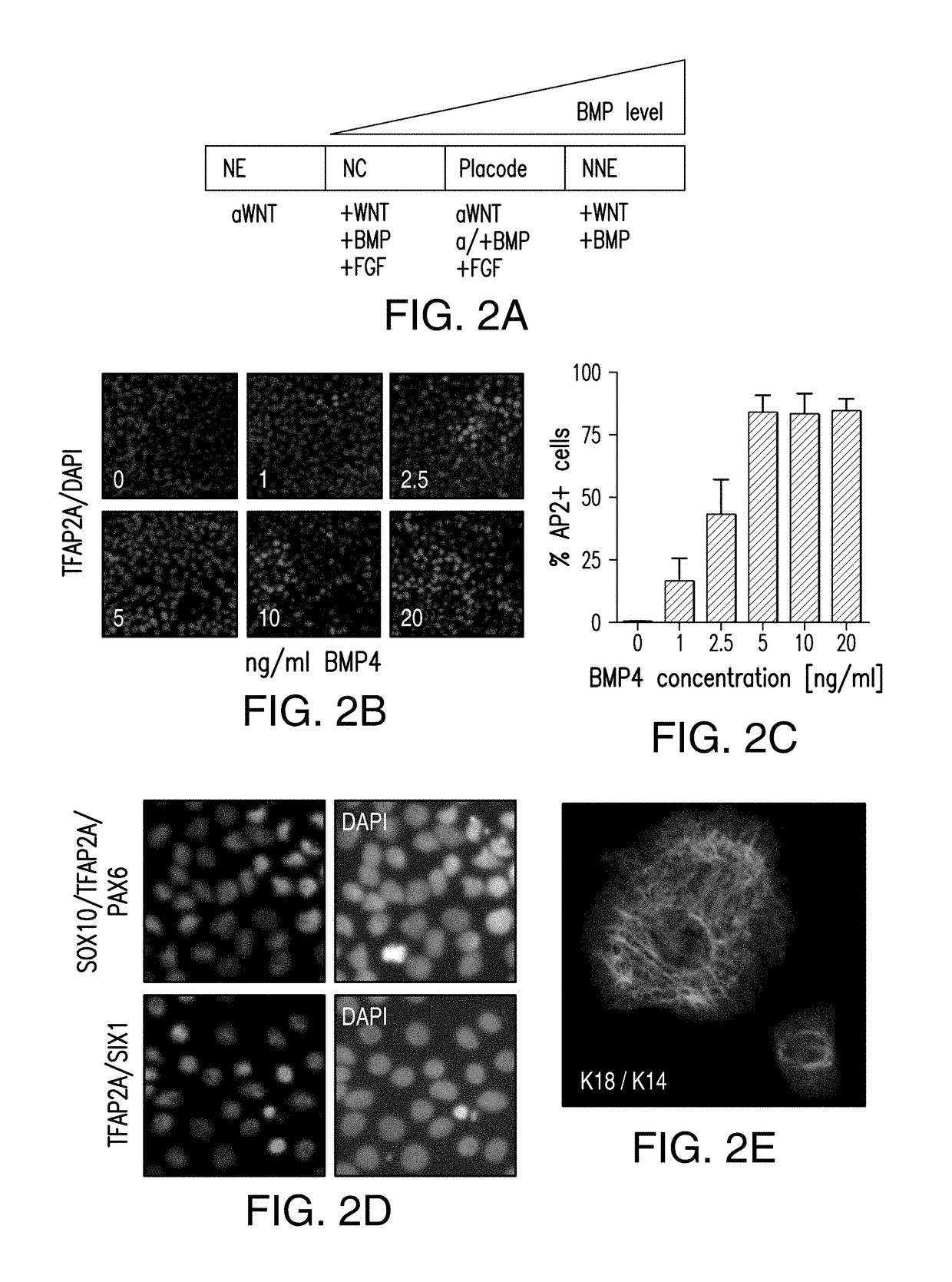Methods of differentiating stem cell-derived ectodermal lineage precursors
- Summary
- Abstract
- Description
- Claims
- Application Information
AI Technical Summary
Benefits of technology
Problems solved by technology
Method used
Image
Examples
Embodiment Construction
[0067]The presently disclosed subject matter relates to in vitro methods for inducing differentiation of human stem cells to cells that express one or more neuroectoderm, neural crest, cranial placode, or non-neural ectoderm lineage marker, and cells produced by such methods, and compositions comprising such cells. Also provided are uses of such cells for treating neurodegenerative disorders.
[0068]For purposes of clarity of disclosure and not by way of limitation, the detailed description is divided into the following subsections:
[0069]5.1. Definitions;
[0070]5.2. Method of Differentiating Stem Cells;
[0071]5.3 Compositions Comprising Differentiated Cell Populations;
[0072]5.4. Method of Treating Neurodegenerative and Pituitary Disorders;
[0073]5.5. Kits;
[0074]5.6 Methods of Screening Therapeutic Compounds; and
[0075]5.7 Methods of Screening for Compounds that Increase NE, NC, CP or NNE fate.
5.1 Definitions
[0076]The terms used in this specification generally have their ordinary meanings ...
PUM
 Login to View More
Login to View More Abstract
Description
Claims
Application Information
 Login to View More
Login to View More - R&D
- Intellectual Property
- Life Sciences
- Materials
- Tech Scout
- Unparalleled Data Quality
- Higher Quality Content
- 60% Fewer Hallucinations
Browse by: Latest US Patents, China's latest patents, Technical Efficacy Thesaurus, Application Domain, Technology Topic, Popular Technical Reports.
© 2025 PatSnap. All rights reserved.Legal|Privacy policy|Modern Slavery Act Transparency Statement|Sitemap|About US| Contact US: help@patsnap.com



